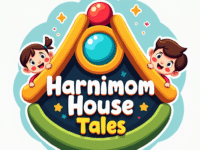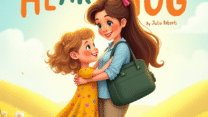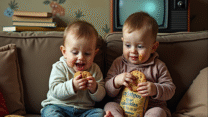
Toddler Routine Charts That Actually Work
If you’ve ever tried to convince a toddler to brush their teeth or get dressed without a full-on meltdown, you know how real the daily routine struggle is. Toddlers resist transitions not because they’re naughty—but because their brains thrive on predictability and visuals.
That’s where toddler routine charts come in.
Routine charts give toddlers a visual sense of control. They allow little ones to “see” what comes next and give them the independence to take action—with your support. And when paired with storybooks that mirror daily habits? That’s where the magic happens.
In this post, I’ll show you how to build a routine chart that actually works for your 1–3-year-old, which mistakes to avoid, and how to use books (like Ellie’s Daily Checklist) to make the entire routine feel empowering—not exhausting.
Why Routine Charts Work So Well for Toddlers
Routine charts are not about strict scheduling—they’re about structure toddlers can count on. Visual cues help your child:
- Predict what’s coming next
- Feel involved in the day
- Gain a sense of mastery
- Reduce tantrums caused by sudden transitions
Even toddlers with limited language can follow a chart filled with pictures. It gives them confidence—and gives you a smoother day.
What to Include in a Toddler Routine Chart
Here are common routines where charts work wonders:
- Morning (wake up, brush teeth, get dressed, eat breakfast)
- Mealtime steps (wash hands, sit down, try a bite)
- Playtime cleanup (put toys in bins, books on shelf)
- Bedtime (bath, pajamas, story, lights out)
Each step should include an image and a simple word or two. Keep it low enough for your child to touch and point to.
📥 Download Printable Routine Chart Set →
How to Use the Routine Chart (and Stick With It!)
- Introduce it like a storybook. Read through the routine chart with your toddler each morning or night.
- Use a reward that builds pride. Instead of stickers for perfection, offer stars or “proud points” for trying.
- Let your toddler lead. Invite them to move a magnet, flip a card, or check off a box after each step.
- Connect it to a book. After brushing teeth, say, “You did it just like Ellie!”
Consistency is key—but don’t expect perfection. Use your chart as a guide, not a rulebook.
Best Types of Charts for Toddlers
- Magnet Boards – Let kids move a magnet from “To Do” to “Done.”
- Flip Cards – Perfect for steps like dressing or bedtime.
- Sticker Charts – For a weeklong view with progress tracking.
- Printable Posters – Easy to hang in bathrooms or bedrooms.
Pro Tip: Laminate printable charts for reuse with dry-erase markers!
Featured Storybook: Ellie’s Ready Day by Harnimom

Ellie doesn’t want to stop playing when it’s time to brush her teeth, get dressed, or head to bed. But with gentle guidance and love, she discovers that daily routines help her day feel calmer, smoother, and even more fun.
📘 Get the book → | 📄 Get the matching routine chart →
Final Words: You’re Not Failing—Your Toddler’s Learning
If your current routine feels more like a wrestling match than a rhythm, don’t worry—it’s not you. It’s that toddlers learn best through seeing, hearing, and doing.
A well-designed chart and a relatable storybook can make the difference between constant chaos and peaceful predictability.
So ditch the power struggles, hang up your chart, and let your toddler lead with confidence.
📘 Coming up next: How to Start a Toddler Storytime Routine That Actually Sticks →













